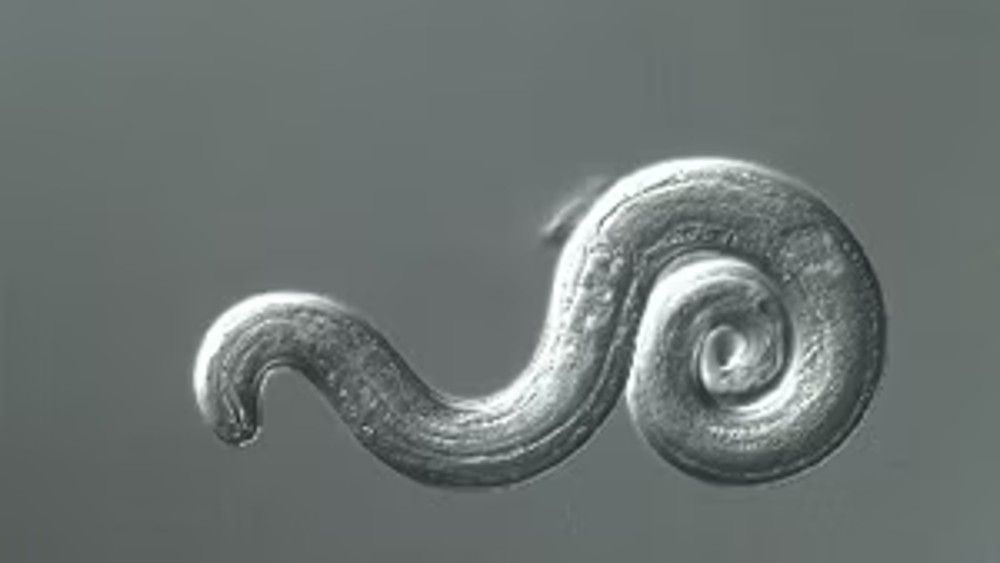A painful burning sensation in a woman’s legs turned out to be the result of a parasite burrowing into her brain, her doctors have revealed.
The 30-year-old, from New England, likely contracted the parasite while travelling in Hawaii, according to a case report published Feb. 13 in The New England Journal of Medicine.
Her symptoms began with a strange burning sensation in her feet. Over the coming days, the pain spread up her legs, and the impacted areas became sensitive to even the lightest touch. She was also fatigued, but she initially attributed that to jet lag following a three-week trip to Thailand, Japan and Hawaii.
She went to an emergency department about the sensations in her legs, but her exams came back normal and she was ultimately discharged. Days later, the sensations spread to her truck and arms and she developed a headache. So she went to a second emergency department, and again, her exams were “reportedly normal,” although her immune-cell count was up. She received medications that relieved her headache before being discharged.
Related: 32 scary parasitic diseases
After about a week of these symptoms, the woman developed confusion and her partner brought her to hospital once again. Her blood tests and kidney function were still normal, and microscopic examination of her blood showed no obvious signs of parasites. However, one thing that did stand out was an elevated level of a type of white blood cell called eosinophils; these cells help the body fight off foreign invaders, including parasites.
The medical team then performed a lumbar puncture, or spinal tap, to draw out a sample of cerebrospinal fluid. This fluid surrounds the spinal cord and brain. This test also revealed a very high level of eosinophils.
Her results were consistent with a condition known as eosinophilic meningitis, a rare form of inflammation in the brain and spinal cord often caused by parasites.
According to the case report, the most common cause of eosinophilic meningitis is rat lungworm (Angiostrongylus cantonensis), a parasite that lives in many tropical and subtropical regions in Southeast Asia and the Pacific Islands, including Hawaii.
After ruling out other culprits, the team determined A. cantonensis was behind the woman’s case. While the parasite was not detected in the patient’s blood, further testing of her cerebrospinal fluid revealed genetic traces of the parasite.
The adult form of the parasite primarily lives inside rodents. Their larvae then pass out through the rodent’s feces, at which point they are eaten by slugs and snails. These larvae mature inside the mollusks until their host is eventually eaten by a rat or other rodent, and the life cycle starts again.
If a human eats an infected mollusk that’s raw or undercooked, or a raw vegetable that has been contaminated with their slime, they can also become infected. Shellfish, including land crabs and freshwater prawns, may also become contaminated if they eat an infected slug or snail.
Not all people who ingest A. cantonensis experience symptoms, according to the U.S. Centers for Disease Control and Prevention (CDC). However, in some cases the larvae migrate to the host’s central nervous system and reach the brain — in some lab animals, this can happen within four hours of ingestion, the case report notes.
Once in the human brain, the parasite can trigger headaches, a stiff neck, vomiting, confusion, tingling or burning sensations and eventually, seizures and vision problems.
In many cases, A. cantonensis infections resolve on their own as the parasites die off, even in cases of meningitis, the CDC says. In those cases, supportive treatments might include painkillers and antiinflammatories. That said, these infections can sometimes be fatal.
In the woman’s case, the patient was given a 14-day course of antiparasitic medication, together with a steroid drug to help bring down inflammation in her nervous system. She was discharged from hospital after six days.
To prevent infection with rat lungworms like A. cantonensis , the CDC recommends that people not eat raw or undercooked snails or slugs, frogs, shrimp or prawns. They should wear gloves and wash hands after handling snails or slugs in the garden. The agency also adds that people should always wash fresh produce thoroughly and avoid eating uncooked vegetables in areas where the parasite is endemic.
This article is for informational purposes only and is not meant to offer medical advice.














